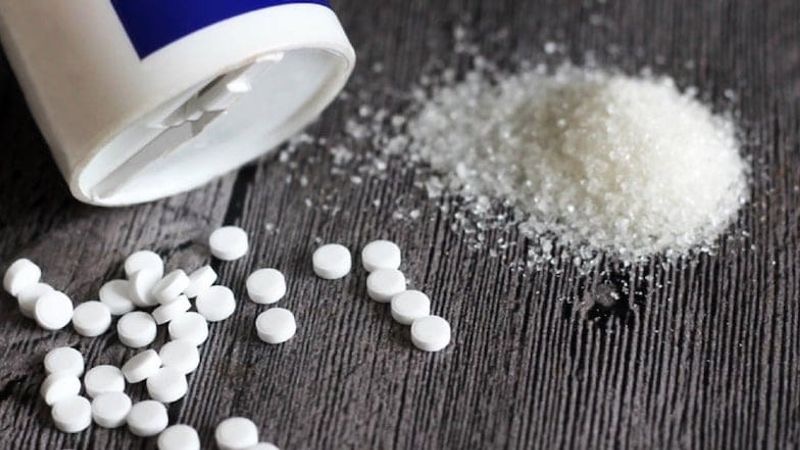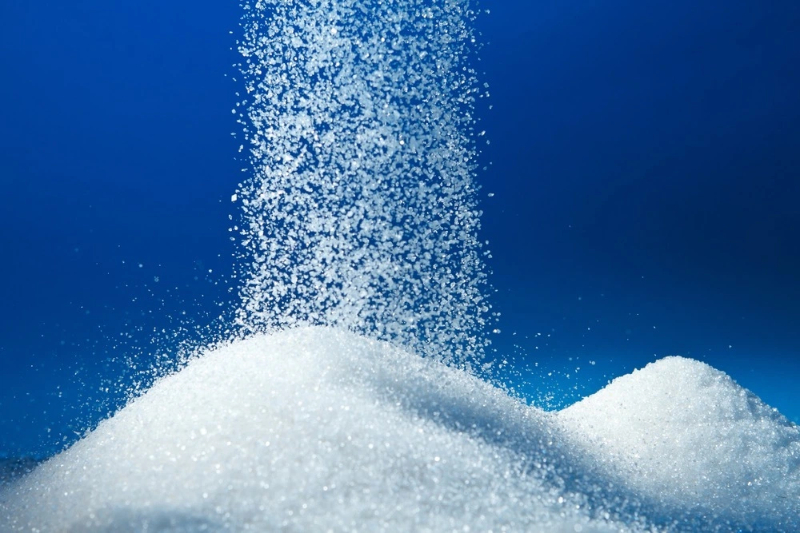Views: 222 Author: Sara Publish Time: 2025-10-28 Origin: Site








Content Menu
● Regulatory and Safety Perspectives
● Metabolic and Microbiome Considerations
● Product Formulation and Blends
● Practical Guidance for Overseas OEM/ODM Partnerships
● Brand and Market Positioning
● FAQ
>> 1. What is the ADI for sucralose, and how does it apply to product formulations?
>> 2. Does sucralose affect blood sugar or insulin levels?
>> 3. Can sucralose change the gut microbiome?
>> 4. Is sucralose safe for long-term use?
>> 5. How should sucralose be used in blended sweetener systems?
Sucralose remains among the most widely used high-intensity sweeteners in the global food, beverage, and health-solution industries. For a China-based factory that specializes in natural sweeteners, functional polyols, and dietary fiber, understanding the role of sucralose within blended sweetener systems, as well as its regulatory status, processing stability, and consumer perception, is essential for successful overseas production, OEM/ODM partnerships, and formulation development. This article delves into the safe use of sucralose, its metabolic and physiological implications, and practical guidance for manufacturers seeking to optimize taste, cost, and regulatory compliance. The term Sucralose is emphasized throughout to strengthen relevance for search and product-portfolio alignment.

Sucralose is a synthetic, zero-calorie sweetener created by selectively chlorinating sugar molecules. Its sweetness is markedly more intense than sucrose, often hundreds of times sweeter, allowing it to deliver the desired sweetness with minimal caloric load. Regulatory bodies have established intake guidelines and usage frameworks for sucralose across diverse product categories, from beverages to baked goods and functional foods. For product developers, recognizing the difference between pure sucralose and sucralose-containing blends is critical for formulation, labeling, stability, and sensory performance. The stability of sucralose under heat, acidity, and processing conditions makes it suitable for a wide range of applications, while its compatibility with polyols and other sweeteners informs blended-sweetener strategies. In addition, understanding labeling requirements helps avoid misbranding and consumer confusion. Sucralose-based blends can offer sugar-like sweetness with reduced calories, appealing to health-conscious markets and regions with growing demand for low- or no-calorie products. The broader context includes how Sucralose interacts with dietary fiber components and functional polyols, enabling structured, health-oriented product lines for overseas customers. The regulatory landscape and sensory considerations together shape practical usage guidelines for your OEM/ODM activities.
- Acceptable Daily Intake and Use Levels: Regulators around the world establish an acceptable daily intake (ADI) for sucralose to protect consumers over a lifetime of exposure. Industry teams should design product formulations and serving sizes that keep typical consumer intake well within these limits, while also considering consumption patterns in target markets. Transparent, compliant labeling further supports safe consumer use.
- Acute and Chronic Effects: For many adults, short-term studies show minimal effects on fasting glucose, insulin response, or glycemic control when sucralose is consumed within approved limits. However, ongoing research explores nuanced metabolic and microbiome-related outcomes, emphasizing the importance of context—dose, food matrix, and individual variability—in interpreting results.
- Special Populations: Regulatory agencies assess safety for children, pregnant individuals, and those with specific health conditions. Given the potential for different metabolic responses in these groups, manufacturers should consider parent-focused education and cautious marketing when targeting sensitive populations.
- Long-Term Evidence and Debates: The scientific landscape includes diverse findings ranging from neutral to potentially modulatory effects on metabolism, gut microbiota, and immune signaling at higher exposures or in particular study designs. While regulatory conclusions remain that sucralose is safe within established guidelines, continuous monitoring of new evidence supports prudent product development and responsible marketing.
- Gut Microbiota: Some investigations indicate that sucralose may alter gut microbial composition in certain contexts, potentially affecting metabolic pathways. Results across studies vary, and the practical relevance to typical consumer intake remains a topic of active debate. For manufacturers, this underscores the value of evidence-based claims and careful product positioning regarding gut health statements.
- Glucose and Insulin Dynamics: Human evidence generally suggests minimal immediate effects on blood glucose and insulin at standard consumption levels. When coupled with foods that have variable carbohydrate loads or different glycemic indices, there can be nuanced interactions that merit contextual analysis rather than blanket health claims.
- Appetite Regulation and Brain Signaling: Emerging human data have explored how non-nutritive sweeteners, including sucralose, may influence brain regions involved in appetite, with some studies suggesting potential shifts in hunger signaling. While findings are not universally consistent, this area highlights the importance of avoiding sensationalized messaging and focusing on evidence-based consumer education.

- Blended-Sweetener Strategies: For overseas OEM/ODM projects, Sucralose is often used in combination with natural sweeteners or polyols to tailor mouthfeel, sweetness potency, and aftertaste. Blends can improve sensory profiles and cost-efficiency while maintaining regulatory compliance and aligning with consumer expectations in different markets.
- Stability and Processing: Sucralose demonstrates robust stability across a range of processing temperatures and pH conditions, enabling use in beverages, baked goods, dairy products, and shelf-stable formats. When designing blends, consider processing steps, packaging materials, and potential interactions with stabilizers or emulsifiers that can influence sweetness perception.
- Labeling and Claims: Clear ingredient declaration and compliant labeling are essential, especially in markets with strict regulations on artificial sweeteners. Avoid definitive health claims that lack robust, context-specific evidence, and provide consumers with transparent information about ADI and the role of sucralose in reducing caloric intake.
- Sensory Optimization: The sensory profile of sucralose blends can vary with formulation, temperature, and food matrix. Pilot sensory testing across multiple product formats helps identify optimal use levels and minimize aftertaste or off-notes, supporting better product acceptance in overseas markets.
- Technical Datasheets: Provide datasheets detailing sweetness equivalence, use levels across product categories (beverages, dairy, baked goods), thermal stability, and compatibility with common packaging materials.
- Regulatory Mapping: Develop region-specific regulatory summaries that outline permitted uses, labeling requirements, and any country-specific restrictions related to artificial sweeteners. This accelerates due-diligence for potential partners and reduces the risk of non-compliance.
- Quality and Safety Assurance: Emphasize GMP practices, batch traceability, and validated cleaning protocols in your manufacturing processes. A robust QA framework helps build confidence with international clients who rely on consistent product quality for their brands.
- Education and Transparency: Provide clear explanations of ADI concepts, safety evaluations, and the role of Sucralose in calorie reduction. Transparent communication supports responsible marketing and consumer trust, particularly in markets with heightened scrutiny of artificial sweeteners.
- Align with Core Strengths: Your factory's strengths in natural sweeteners, functional polyols, and dietary fiber can be leveraged to position Sucralose within blended systems as part of a broader health-oriented sweetener strategy. This approach resonates with overseas manufacturers seeking holistic, science-backed solutions rather than single-ingredient gimmicks.
- Storytelling for Global Markets: Highlight your commitment to safety, regulatory compliance, stable supply chains, and customization capabilities. Demonstrating expertise in product development, tablet production, and OEM/ODM services can differentiate your offerings in crowded markets.
- Consumer Education Focus: In markets with skepticism around artificial sweeteners, provide balanced messaging about ADI, processing, and consumption context. Supporting information with reputable sources helps customers make informed choices.
Sucralose continues to be a pivotal tool for reducing calories in a variety of foods and beverages while enabling product innovations in blended sweetener systems. While short-term human studies often show minimal direct effects on glycemic markers at typical intakes, the growing body of research on gut microbiota, appetite signaling, and potential long-term metabolic impacts invites careful consideration in product development and marketing. For a factory specializing in natural sweeteners, functional polyols, and dietary fiber, integrating Sucralose into blended formulations—supported by technical data, regulatory awareness, and transparent consumer education—offers a path to safe, high-quality, globally appealing products. This strategy aligns with your OEM/ODM capabilities and supports collaboration with overseas manufacturers seeking reliable, science-based sweetener solutions.

The acceptable daily intake (ADI) for sucralose is established by regulatory bodies to cover lifetime exposure. Formulations should ensure that consumer intake remains well below the ADI through appropriate use levels and serving sizes.
Most human studies report little to no acute impact on blood glucose or insulin when consumed within approved limits, though results can vary with dose, food matrix, and individual metabolism.
Some research indicates possible changes in gut microbiota with certain exposure levels, but findings are not consistent across studies. Claims about gut health should be evidence-based and contextual.
Regulatory agencies have deemed sucralose safe for approved uses, but ongoing research continues to refine understanding of potential long-term effects, particularly at high exposures.
Integrate sucralose with other sweeteners and functional ingredients to optimize taste, stability, and cost. Provide technical data on recommended use levels for various product formats and ensure compatibility with processing conditions and packaging.
[1](https://mindstreamintegrative.com/blog/rethinking-artificial-sweeteners-the-hidden-risks-of-sucralose-and-artificial-sweeteners/)
[2](https://www.dzd-ev.de/en/press/press-releases/press-releases-2025/artificial-sweeteners-stimulate-hunger-signals-in-the-bra)
[3](https://www.cnn.com/2025/03/29/health/artificial-sweetener-sucralose-hunger-signals-wellness)
[4](https://www.neurology.org/doi/10.1212/WNL.0000000000214023)
[5](https://keck.usc.edu/news/calorie-free-sweeteners-can-disrupt-the-brains-appetite-signals/)
[6](https://www.endocrine.org/news-and-advocacy/news-room/endo-annual-meeting/endo-2025-press-releases/chen-press-release)
[7](https://pubmed.ncbi.nlm.nih.gov/40140714/)
[8](https://www.upmc.com/media/news/073125-artificial-sweetner)
[9](https://www.ajmc.com/view/the-double-edged-sword-of-artificial-sweeteners)
[10](https://ehp.niehs.nih.gov/doi/10.1289/ehp15919)
